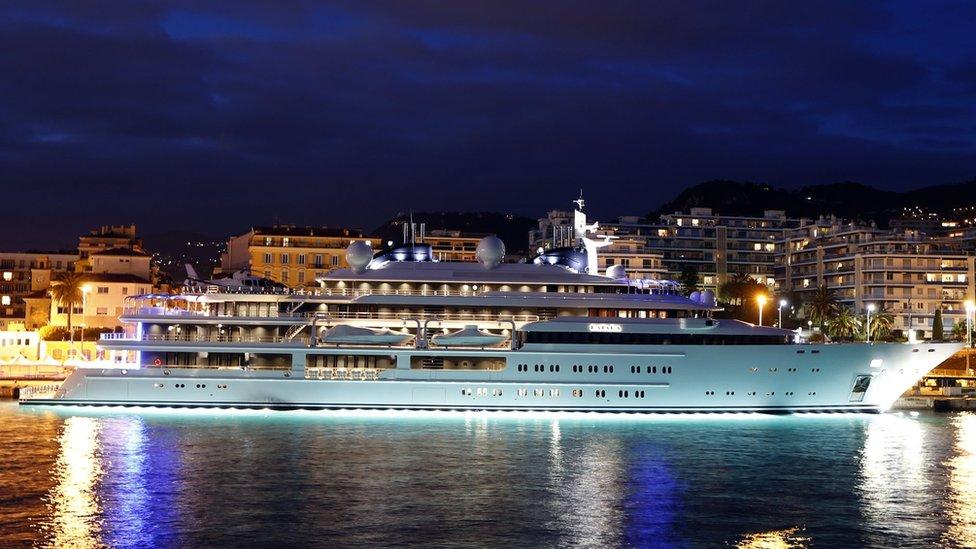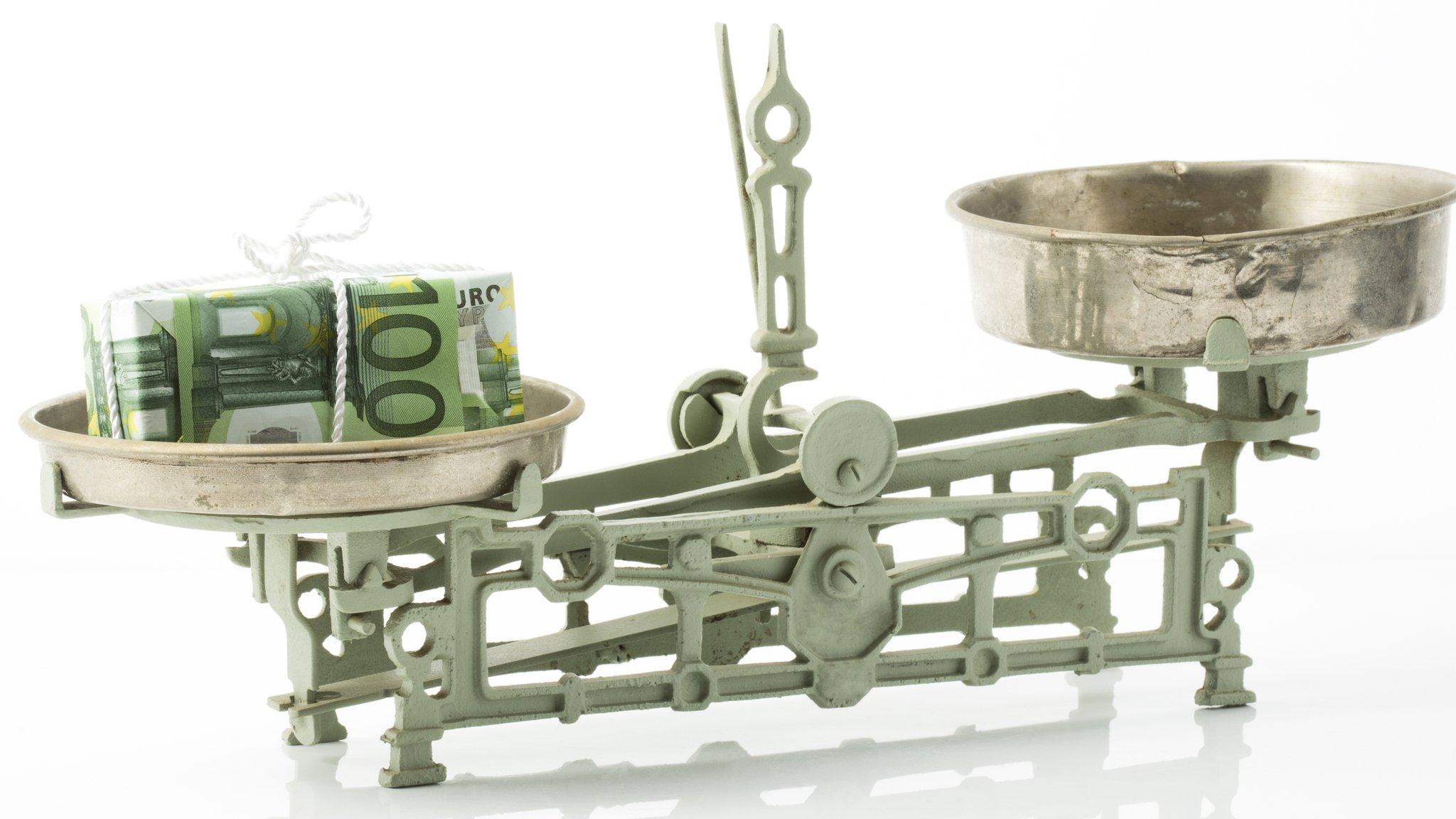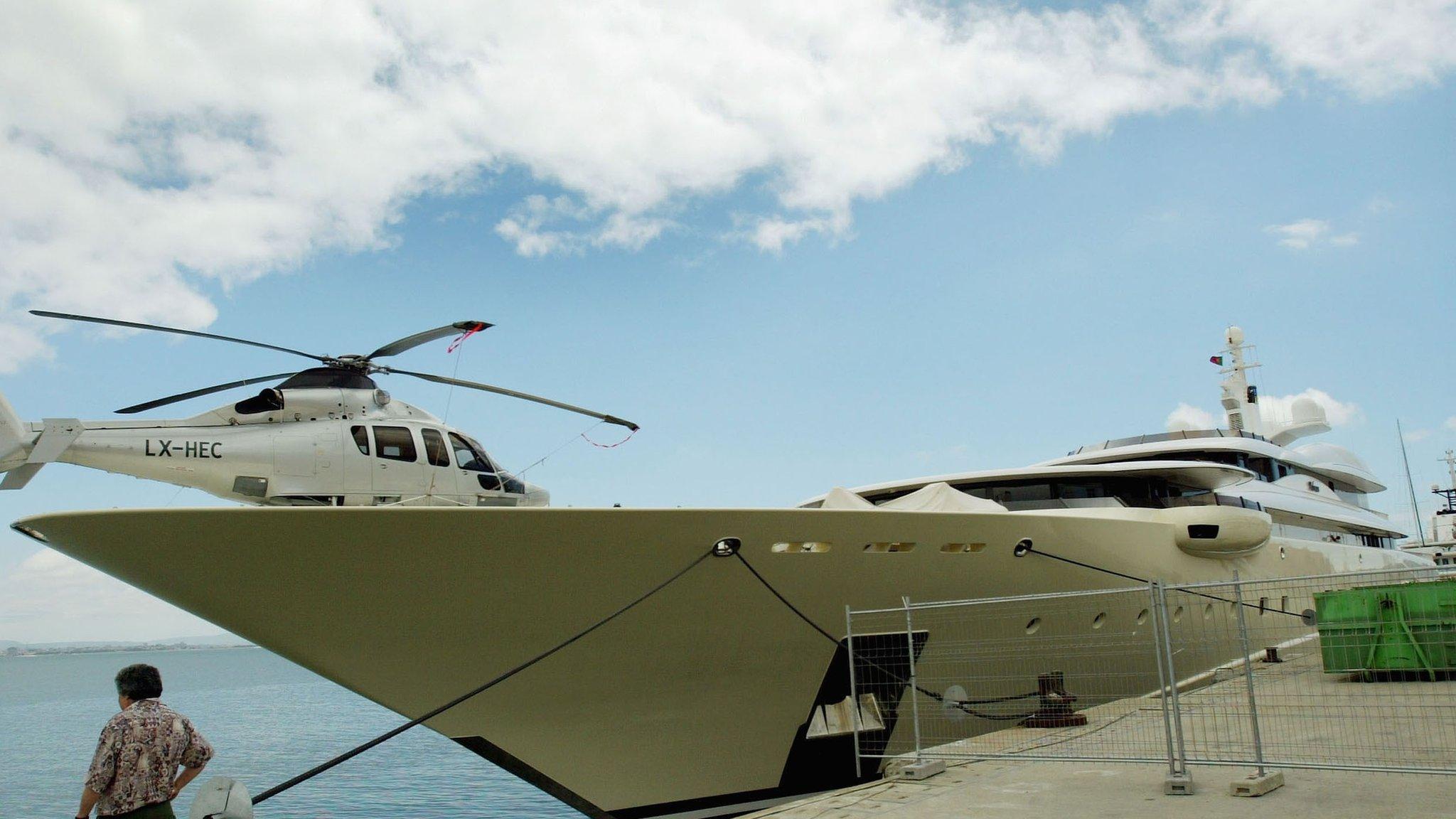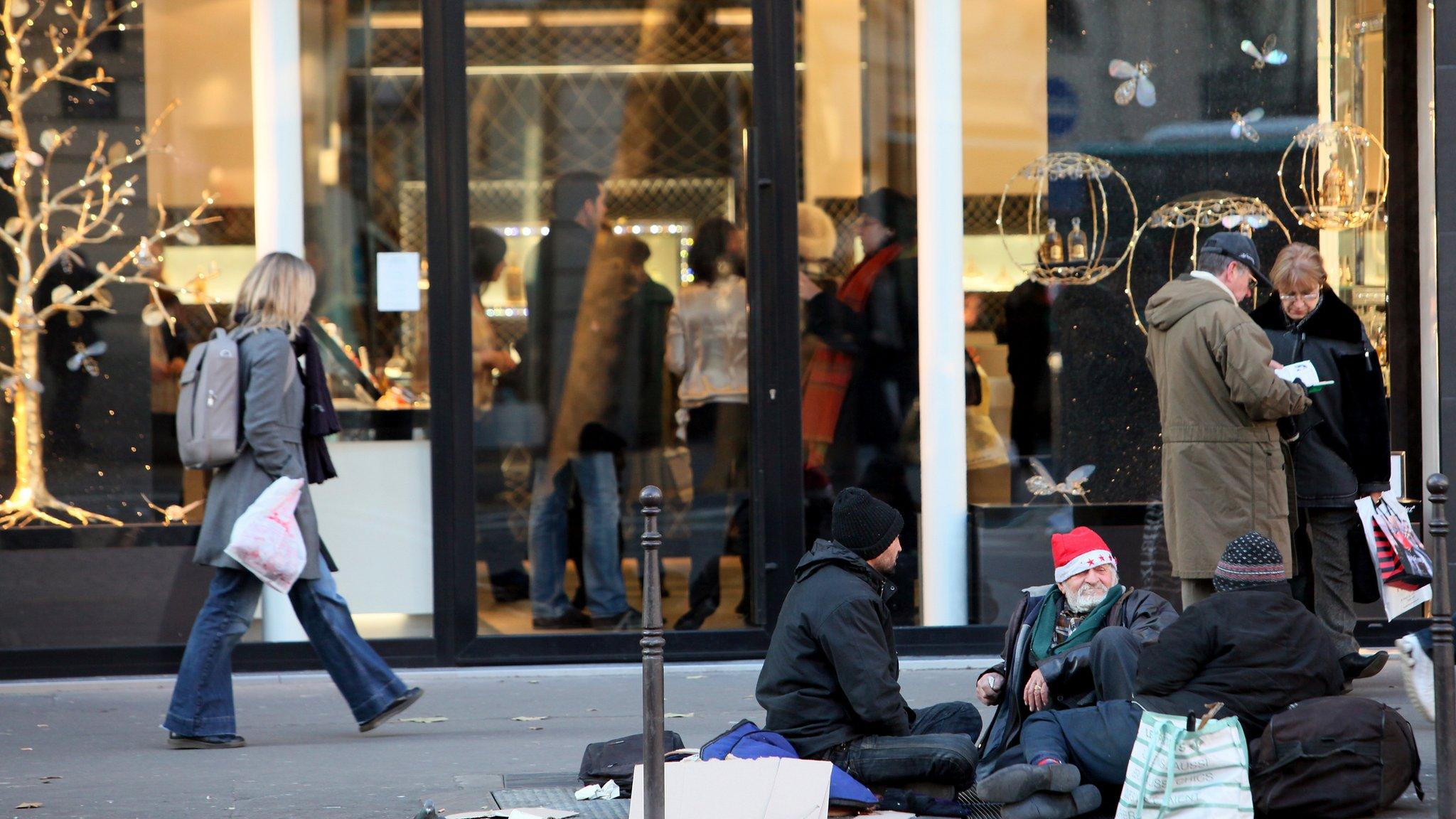Oxfam says wealth of richest 1% equal to other 99%
- Published

The richest 1% now has as much wealth as the rest of the world combined, according to Oxfam.
It uses data from Credit Suisse, external from October for the report, which urges leaders meeting in Davos this week to take action on inequality.
Oxfam also calculated, external that the richest 62 people in the world had as much wealth as the poorest half of the global population.
It criticised the work of lobbyists and the amount of money kept in tax havens.
Oxfam predicted that the 1% would overtake the rest of the world this time last year.
It takes cash and assets worth $68,800 (£48,300) to get into the top 10%, and $760,000 (£533,000) to be in the 1%. That means that if you own an average house in London without a mortgage, you are probably in the 1%.
The figures carry various caveats, for example, information about the wealth of the super-rich is hard to come by, which Credit Suisse says means its estimates of the proportion of wealth held by the 10% and the 1% is "likely to err on the low side".
As a global report, the figures also necessarily include some estimates of levels of wealth in countries from which accurate statistics are not available.
'Misleading'
Some free market think tanks questioned the credibility of the figures.
The Institute of Economic Affairs' director general Mark Littlewood said the statistics were "bogus".
"The methodology of adding up assets and subtracting debts and then making a global 'net wealth' distribution implies that many of the poorest in the world are those in advanced countries with high debts. Whilst we might have sympathy for the Harvard law graduate's plight, it is unclear that worrying about her should be the focus of a development organisation," he said.
The Adam Smith Institute's head of research Ben Southwood also said the data was "misleading".
"More meaningful measures show greater equality. Those in the middle and bottom of the world income distribution have all got pay rises of around 40% between 1988-2008. Global inequality of life expectancy and height are narrowing too—showing better nutrition and better healthcare where it matters most.
"What we should care about is the welfare of the poor, not the wealth of the rich," he added.
Oxfam said that the 62 richest people having as much wealth as the poorest 50% of the population is a remarkable concentration of wealth, given that it would have taken 388 individuals to have the same wealth as the bottom 50% in 2010.

"Instead of an economy that works for the prosperity of all, for future generations, and for the planet, we have instead created an economy for the 1%," Oxfam's report says.
The trend over the period that Credit Suisse has been carrying out this research has been that the proportion of wealth held by the top 1% fell gradually from 2000 to 2009 and has risen every year since then.
In fact, it is only in the 2015 figures that the proportion held by the top 1% overtakes the share taken by them in the first report in 2000.
Oxfam calls on governments to take action to reverse this trend.
It wants workers paid a living wage and the gap with executive rewards to be narrowed.
It calls for an end to the gender pay gap, compensation for unpaid care and the promotion of equal land and inheritance rights for women.
And it wants governments to take action on lobbying, reducing the price of medicines, taxing wealth rather than consumption and using progressive public spending to tackle inequality.
- Published21 May 2015

- Published14 May 2015

- Published19 January 2015

- Published19 January 2015
- Published19 January 2015
